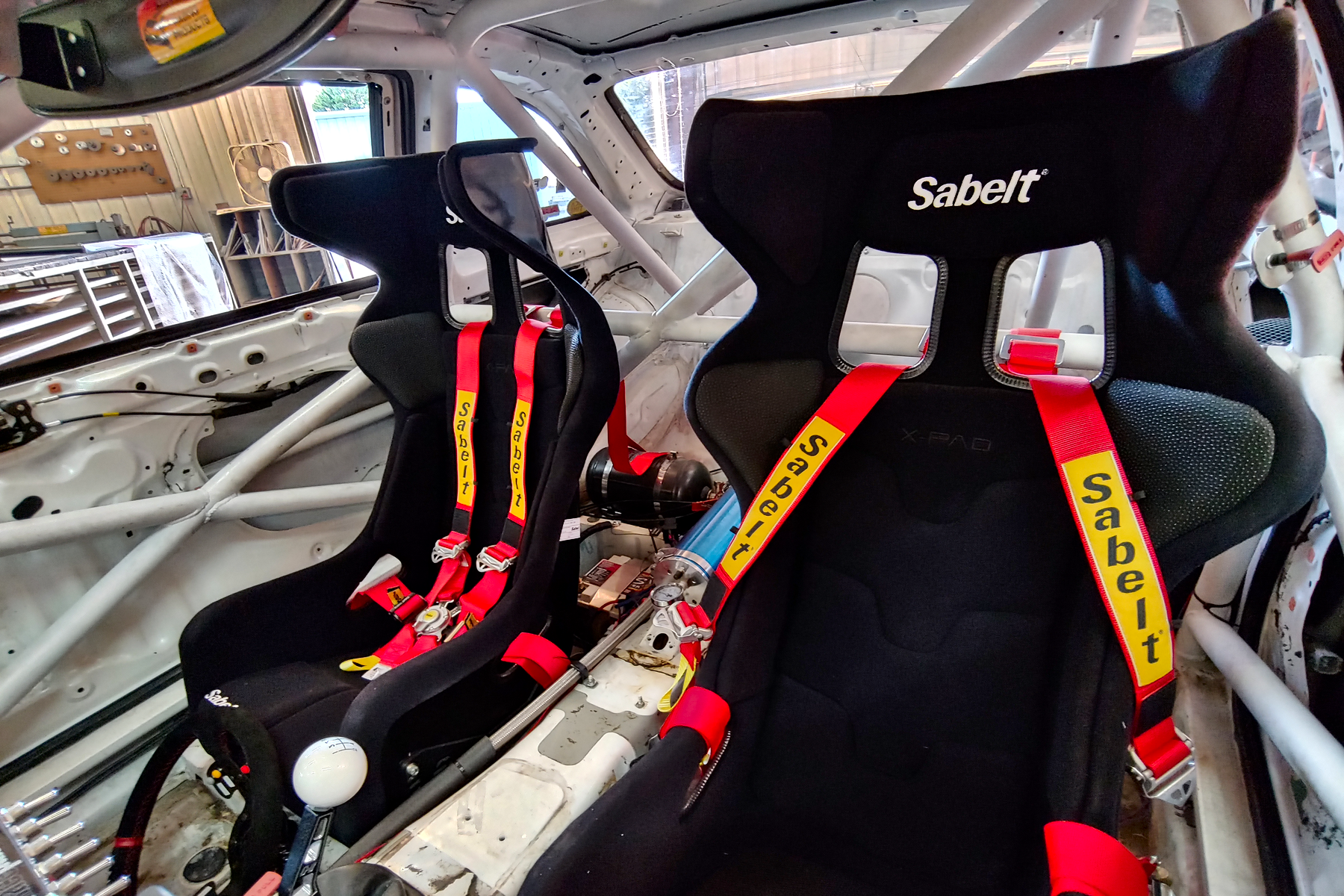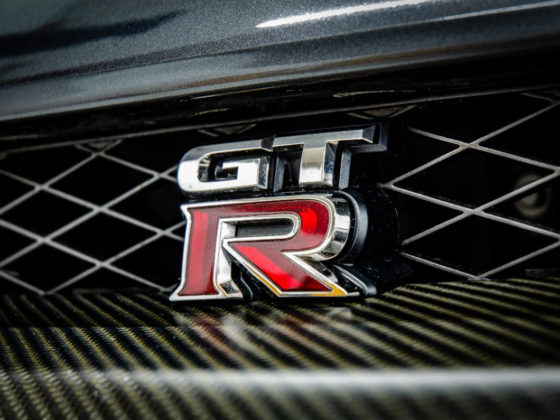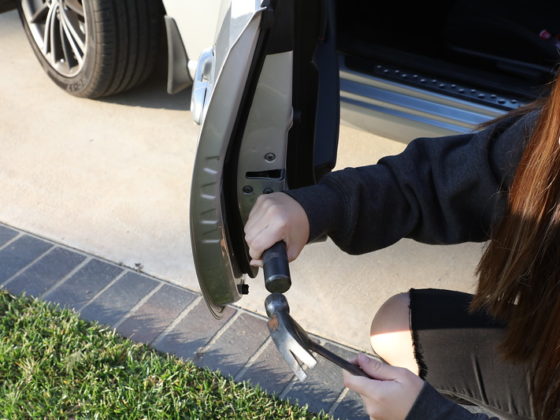
The frame is then painted to ensure that the bare metal doesn’t rust or otherwise oxidize. I got to choose any color I wanted, as long as it was gloss black.
Now it was time to install the belts.

These are the Sabelt Enduro Silver 6-point belts. They also come in two higher trims, Gold and Platinum. Don’t let the “low end” choice of belt fool you. Despite being the entry into their enduro line, these Sabelt belts are fully featured and well outfitted.

The Enduro belts are designed with eye-bolt attachments for all points. Once you have the belt lengths adjusted as required, it is recommended that the hooks be installed and then these cotter pins run through the little hole. This helps prevent the latching mechanism from accidentally opening. If you need to remove the belts at any point in the future, simply remove the cotter pin and then you can open the latching assembly. A nice touch.

Pull down belts are what most people are familiar with, and are far easier to adjust constantly. The high quality of the Sabelt adjusters also ensures that you can actually adjust the lap belt easily yourself without too much fighting. My old harnesses were a constant source of frustration with respect to adjusting the lap belts.
The pull up belt can be easier to use in certain circumstances and cockpits, but it requires a lot more initial adjustment to get perfect, and cannot be easily adjusted at all once you are in the seat.
In most cases your factory seat belt mounting holes can be used for securing the lap belt harnesses via the supplied eye bolts. If your vehicle did not have a seat belt mounting attachment on the center-side, you can use a mounting/backing plate similar to how the sub belts are mounted. All seat belt mounting hardware, regardless of vehicle manufacturer, and for the last several decades, uses the same exact thread, so you can expect the eye bolts to screw right in.
The instruction manual is pretty clear about what acceptable angles for the belts are, so double check that using the factory mounts won’t put you in danger.

Fortunately the hole in the bottom of the Sabelt X-PAD seat is large enough to get your hands through in order to attach and adjust the submarine belts.




3 comments
As usual, a very well written article. Thanks, Erik! There is a lot of good information here and I hope that your next update IS about that well-deserved track time. I do have a question, though. At the bottom of page 2, you mention that “The factory seat brackets had been cut and channeled to accommodate flat bar which then had threaded holes installed onto which the seat mount was attached.” So, was the newly installed seat and bracket attached to the old flat bar setup? If so, why didn’t you have Robinson remove the flat bar and do a full install by not using any previously fabricated components? Not to detract from the work done (which is awesome), just a curiosity. Thanks.
@BANSFTC
Yes, if you look at the last picture on page 2, those are the “original” mounts that were fabricated by the cage builder (different shop). It’s basically flat bar fabbed into the OEM seat mounts. On the middle of page 6 you can see that Barry ground the paint away to expose bare metal, and then welded his new square frame directly to the flat bar that was already there. So, the OEM seat mounts have flat bar welded to them, and then a square frame welded to that.
Barry felt that the existing flat pieces were welded well enough into the chassis that they would be a suitable mounting point for the new frame. It would’ve been extra hours to chop all that stuff out.
The other thing is that the OEM mounts are usually (!) safe enough for rollover and serious crashes in terms of being welded into the car. So, using them as a starting point can sometimes be easier because they are often flat in relation to a floor that is far from flat.
If I was starting over from a bare tub today, Barry probably would’ve opted to make two bars going from the side rail to the tunnel all nice and welded in and then build the seat frame on top of that, but that’s quite a bit of extra work. You can see from the picture on the middle of page 6 that the floor of the driver side is not flat. So to make it work you end up having to start cutting things out of the floor pan and that gets ugly quick.
I hope that clears it up!
Fat-fingered my own name. I miss the previous motoiq.com format where we would log in.
Yes, your reply does clear it up. I was thinking about the cross bars that you mentioned (side rail to tunnel), but your explanation makes it clear why it was done with the existing flat stock. Thanks for clarifying. Keep these articles coming! They’re great.